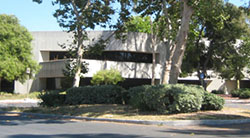
Early learners are at a big disadvantage when it comes to federally funded educational programs. Research tells us that less than half of low-income children have access to high-quality early childhood education programs. This is important because skills developed in the first five years of life greatly influence success in later life.
Lack of federal funding prevents 90% of eligible children from receiving support from federal programs. The problem is especially severe in rural areas where only 44% of children are enrolled in preschool services compared with 79% in suburban areas.
Low-income families are also negatively affected by lack of federal support. Children from these families receive lower-quality care. Head Start programs serve less than 20% of three- and four-year-old children who come from low-income families.
A new law is designed to change all that.
Every Student Succeeds Act (ESSA) Promotes Early Learning
On December 10, 2015, the Elementary and Secondary Education Act (ESEA) was reauthorized through the passing of the Every Student Succeeds Act (ESSA). This law replaced the No Child Left Behind Act of 2001 and allows federal funds to be used for early learning and care.
ESSA enables the sharing of policy decisions with the states, which will help facilitate greater early learning alignment and coordination with local elementary schools. These changes will allow states to develop better systems and processes to identify and improve the nation’s lowest-performing schools.
Key Component of ESSA Is Preschool Development
Among ESSA’s many important learning provisions, the most significant is a new Preschool Development Grant program (PDG). This program provides competitive grants that are managed jointly by the U.S. Department of Health and Human Services and the U.S. Department of Education. The program provides for states to improve access, coordination, and quality in early childhood education for low- and moderate-income children from birth to age five.
First Five Years Fund (FFYF) Promotes ESSA
In helping to make ESSA successful, the First Five Years Fund (FFYF) is a voluntary advocacy group that promotes federal investment in quality early childhood education for disadvantaged children from birth to age five. FFYF provides research and information to policymakers, advocates, business leaders, and the public and is committed to helping states and school districts understand and use the ESSA law.
FFYF works closely with other federal advocacy groups and with White House officials, agency leaders, and members of the Senate and House of Representatives to advance early childhood policy recommendations.
States Submit Plans
Earlier this year, all states submitted consolidated plans to the U.S. Department of Education (ED) on how they plan to implement the new law. These plans indicate that the states view ESSA as an integral part of their educational development initiatives and plan to improve their schools and hold them more accountable.
The initiatives are important because they are essentially voluntary since few of the “early learning” provisions of ESSA are federally mandated. The education agencies overseeing the law include a State Education Agency (SEA) for each state and the Local Education Agency (LEA) appropriate for each community.
The SEA is normally the State Board of Education responsible for the supervision of public elementary and secondary schools in the state. But the SEA could also be an office or agency designated by the governor or state law.
The LEA is a public board of education that has legal authority to service schools in a city, county, township, school district, or other political subdivision in a state.
The FFYF Progress Report
The First Five Years Fund released a new report on how all states are using ESSA to leverage federal support for early learning.
ESSA requires states to publish annual report cards to describe how their public schools are performing, as well as promoting greater transparency about educational opportunities.
ESSA Title I requires these state report cards to include the number and percentage of students enrolled in preschool programs.
Neither states nor districts are obligated to use Title I funding for early learning, but if they elect to do so, they must develop a strategy for supporting, coordinating, and integrating early childhood education services as part of their Title I plan.
According to the report, 13 states plan to make early-learning initiatives a part of their state accountability systems under Title I. For example, the Illinois Board of Education plans to evaluate P-2 as part of its accountability system.
15 states and the District of Columbia plan to make early learning a strategy for school improvement within Title I.
Professional development and academic enrichment are also mentioned in using funds to improve early learning effectiveness. This is part of Title II strategies. 31 states plan to use their Title II professional development funds to help high school support professionals work with children aged eight and under.
Title IV addresses the offering of well-rounded educational experiences to all students, including underrepresented low-income students. These experiences high-quality STEM initiatives, activities and programs in music, the arts, and other subjects that provide a well-rounded education.
Under Title IV, 38 states plan to include early learning as part of their “Well-Rounded Education Initiatives.”
Title V covers support to rural schools. Massachusetts and Tennessee, for example, are using Title V funds to support low-achieving students in Rural and Low-Income Schools (RLIS) with the objective of improving achievement. Colorado offers a Rural Education Achievement Program (REAP).
Title VIII requires that SEAs, LEAs, or other federally financed entities provide equitable services to eligible gifted private school participants in elementary and secondary schools.
New Jersey, New Mexico, Delaware, South Carolina, and Washington are including as their objectives the serving of preschool children in private schools through appropriate ESSA programs.
Washington will provide a guide on ESSA early-childhood provisions for its school districts. The guide will include options for school districts to collaborate with private schools and other early learning providers in providing joint professional development and sharing tools and resources.
Through federal programs like ESSA, individual state initiatives, and supporting organizations like FFYF, the gap may finally be closing between urban high- and medium-income family children and underrepresented rural and disadvantaged children.






